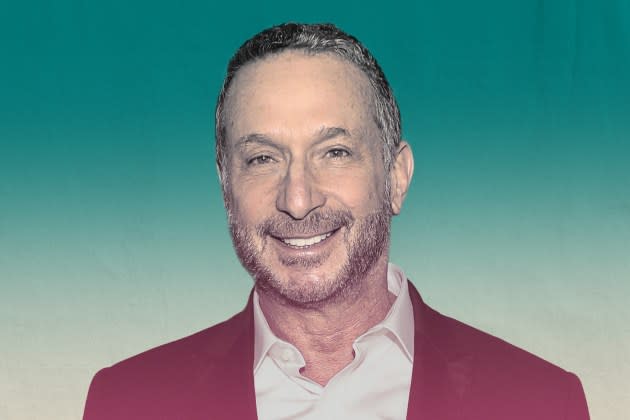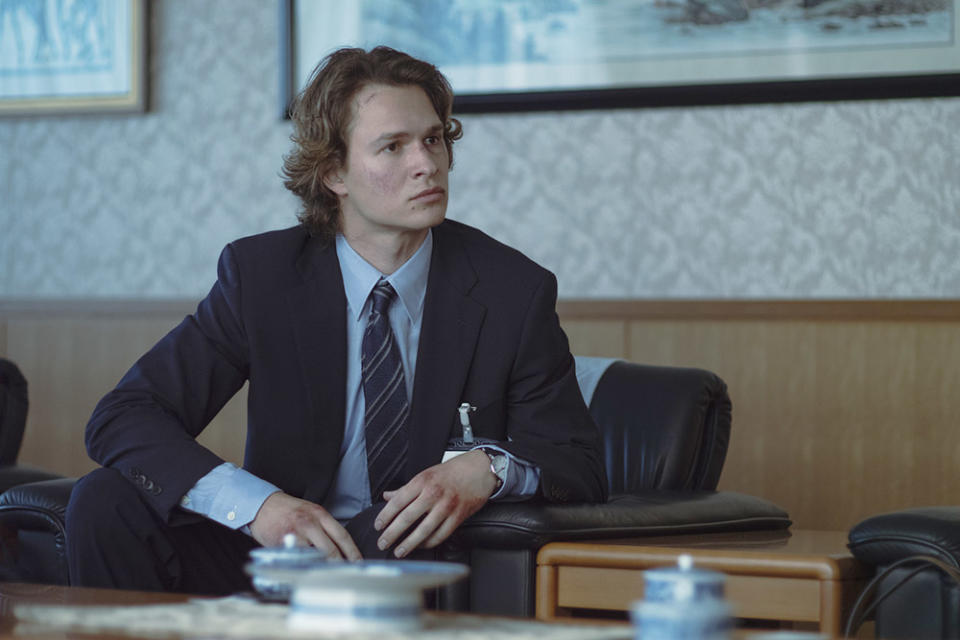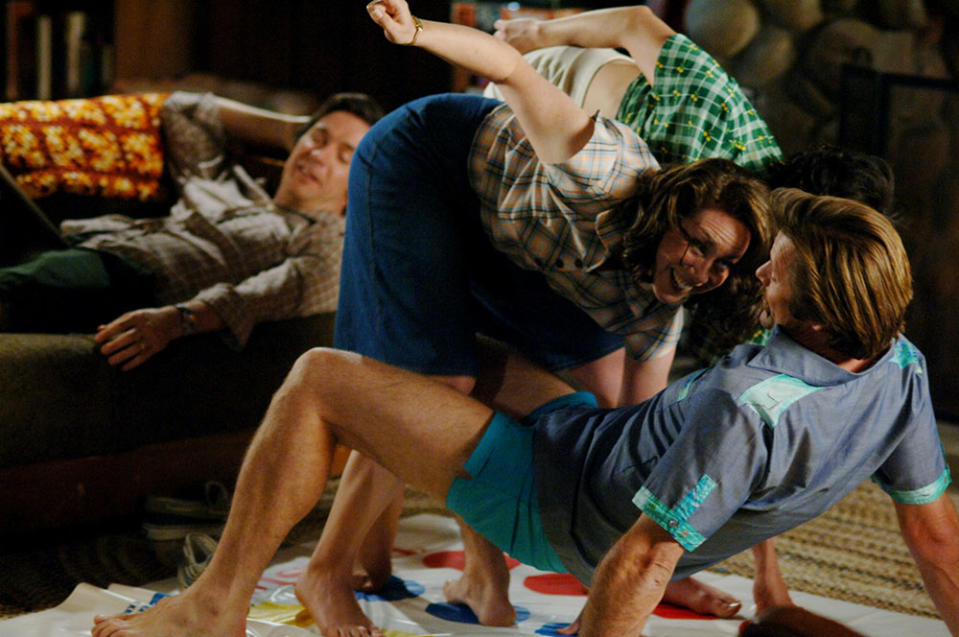‘Tokyo Vice’ Is Back — and Alan Poul Is Thrilled About The Slow Rollout
- Oops!Something went wrong.Please try again later.
- Oops!Something went wrong.Please try again later.
- Oops!Something went wrong.Please try again later.

Tokyo Vice is back from quite a lengthy hiatus. And despite the nearly two-year gap between seasons — one that saw a full rebrand for streamer Max — things pick up pretty much exactly where they left off.
Series executive producer and director Alan Poul, who helmed the first two episodes, suggests the handling of the pair will probably soften the blow for viewers. “The premiere is like episode nine of season one, a direct continuation,” Poul says of the two-part Feb. 8 premiere. “The second episode is really the start of the new storylines.”
More from The Hollywood Reporter
Why 'Curb Your Enthusiasm' Is Ending and the Story Behind Season 12's Premiere Kicker
Commercials Are Streaming's New Norm, and Creators Aren't Happy: "It's Almost Worse Than Broadcast"
Tokyo Vice has been a bizarre culmination of interests for Poul. The prolific TV producer (Tales of the City, My So-Called Life, Six Feet Under, The Eddy) and director (Big Love, Swingtown, The Newsroom) has been speaking Japanese since he spent time in the country as a teenage foreign exchange student. He doubled down in college, pursuing an aggressive Japanese language and literature major. It all proved quite useful during the long Tokyo shoots for the Ansel Elgort vehicle, loosely based on the writing of journalist Jake Adelstein.
Speaking over Zoom in January, Poul talked about the second season of Tokyo Vice, which drops new episodes weekly through April, evolving the style established by pilot director Michael Mann, the project he most wants to revisit and the pains of Peak TV’s end.
***
Obviously you had some source material in Jake Adelstein’s book. How much of a playbook is that now that you’re in a second season?
It’s complicated, because we had to change a lot of the book — even for season one, simply because the story that Jake tells in the book is about a real yakuza boss. Jake was able to break the story of this guy illegally jumping the line and getting into the U.S. and receiving a liver transplant, way ahead of many other patients, because of illegal donations and selling information to the FBI. All kinds of dirty stuff. But that story was still untouchable in Japan. Even though Jake was working for the Yomiuri Shimbun, the newspaper, at that time, he could only get the story published by selling it to The Los Angeles Times. That oyabun, the name for a yakuza boss, is still alive. He’s allegedly out of the business and living in a retreat somewhere, but nobody wanted to get too close to the real story. Jake’s book has never been published in Japan.
That’s kind of wild.
To say that the country is controversy averse is an understatement. And whether it’s journalists or whether it’s film exhibitors, nobody wants to touch the yakuza. They’re not as powerful as they were during the period we’re depicting in the show, but they’re an ever-present network underneath the surface of business and society. So we had to depart significantly from Jake’s original book — just in order to get the show made. There was even pressure for us to change the name of the protagonist, so we could say it was entirely work of fiction — which we refused to do. But if you watch the end credits, there’s a disclaimer saying it’s entirely a work of fiction that’s on-screen for about seven seconds by demand of various parties.

But the show is relatively popular in Japan at this point, yes?
Yeah. Max is not a global brand. So, in most of the rest of the world, it’s sold territory by territory by Fifth Season, the studio that I work with. Very early on, we made a deal with Wowow, the premium satellite network in Japan. They had an exclusive window. The show was highly regarded, but their number of subscribers is nowhere near what Netflix or Amazon has there. Finally, last summer, they sold a second window to Netflix. That’s when the numbers ballooned.
What about season one worked best for you, in terms of what you wanted to continue — either aesthetically or thematically?
I think that being able to create realistic depictions of the world of the yakuza and what you’d call the mizu shobai — the nightlife, the hostess clubs — was something that we worked really hard at in season one. The yakuza, in particular, are rarely presented in any realistic way. Even in Japanese films and television, yakuza stories tend to be larger than life sagas with lots of big acting and exaggerated characteristics. We were trying to give a sense of what it really meant to choose that life and what it meant for you and your family.
When one directs episodic TV, you’re often emulating a style that was established by the pilot director — which you’ve done in the past but not here. How is directing something different when you’re taking a page from the Michael Mann playbook?
I’m used to directing pilots and being a part of setting that template. But as the executive producer, you are still exerting some influence from the get-go on the look and feel. Admittedly, you’re exerting less influence when your pilot director is Michael Mann or Damien Chazelle, but it’s still a collaborative effort. Michael is obviously an icon, and so he wanted to do what he wanted to do. But there’s a certain amount of neo-noir Tokyo 1999 style that was kind of baked into the script. Part of it was always there. And in season two, I directed the first two episodes — which was a reset to some extent. We wanted to keep a lot of the style from season one but also make some significant adjustments. Essentially, episode one of season two picks up where we left off. Because we left off with a ton of cliffhangers.
Did you want to resolve those as quickly as possible?
The premiere is like episode nine of season one, a direct continuation. The second episode is really the start of the new storylines — and there is a bit of a time gap in between. And so we made some subtle changes in the look of the show and the style of the show between episode one and episode two, because episode one had to adhere to the season one format.
After the two-part premiere, the second season is dropping episodes weekly instead of batches like before. Why the change?
The once-a-week model makes me happy because it leaves more room for buzz or water-cooler conversation that you can’t get on a Netflix show. There is also a fear now that any TV show can only grab the spotlight for a week, because there’s so much content being launched all the time. I’m really happy that Max has decided to go old school with us.
Were you at all involved with that Six Feet Under reboot that didn’t happen?
There were early discussions, but I wasn’t really involved. I keep in touch with everybody. One of our writers was originally involved. Then a different writer was brought in. There was a very interesting pitch about the next generation. Personally, unless there’s a compelling reason to explore a title other than to wring more money out of it, it’s not something that interests me.
You’ve worked on a lot of long-running series, but there have been a few famous short-lived ones…
You mean failures? [Laughs]
Not Failures. Nobody would call My So-Called Life a failure! But in that group of one-season shows, and ignoring My So-Call Life, which one do you think most deserved more of a shot?
Clearly it’s Swingtown. That was a groundbreaking show that Mike Kelley created, which Mike and I developed together. It was supposed to be on Showtime, back when Bob Greenblatt was running the network. They wanted the show, but they didn’t have the production budget in that year, so they told us to wait a couple of months. We thought, nobody else was going to buy this thing. The original script was kind of a hard R. At the end of the pilot, when the two couples go off into the bedroom, the camera went with them originally. But while we were waiting for Showtime, Nina Tassler, God bless her, was running CBS at that point. She got ahold of the script and came after us to put the show on CBS. We were like, “What are you smoking?” This is in 2007, when CBS was still very much overseen by Les Moonves.

At any point, during the 15-plus years since, it would have been a weird fit for CBS.
But Nina is an unstoppable force, so she was like a dog with a bone with the show. She persuaded Mike and me that CBS could present this show and do justice to it. We had this big meeting where we had these three non-negotiable demands about the pilot: that they show the 16-year-old daughter smoking pot, that Molly Parker’s character take Quaaludes and that the two couples still all go to bed together by the end of the pilot. There had been a suggestion that we should let the audience warm up for three or four episodes before we get to the actual swinging.
And you got all that, didn’t you?
Nina didn’t blink. And so we made the pilot the way we wanted to. We got the show on. It was, in some ways, a more impressive creative achievement to be able to portray that very adult subject matter on a broadcast network, but we were undone by the fact that it was the wrong network and the last writers strike pushed us to the summer. That killed us. The viewers just weren’t there. But I’m really proud of that show, and I think that it holds up.
Obviously directing is project-to-project choice — but, as a producer, does broadcast interest you at all at this point?
Under the right circumstances. I mean, there are no broadcast shows that I’m watching at present. But what I have tremendous interest in is the procedural form. That was what built up America as the dominant TV culture in the world. I’d be interested to go back to that and trying to create a show that can still be innovative and maybe push boundaries without serialized component to it. Serialization has become the ultimate prerequisite in streaming these days, so it might be that a broadcast network would be the right place for that if the appetite is there.
Michelle and Robert King seem to find the sweet spot between procedural and serial, but then you have a show like Evil that’s ultimately punted to the streamer.
They’re brilliant. I kind of worship the Kings because what they were able to do within the broadcast world was groundbreaking. But they did that show, that summer replacement called BrainDead? That was the most prophetic show of the early 21st century. It’s about Trumpism, and it happened before Trump! And I’m surprised that it hasn’t been seized on by more people as such a prescient cultural marker. It was the canary in the coal mine.
Now that we’re the downslide from Peak TV, do you think that the 2019 Tales of the City could get made today? Because it seems like the kind of project that might have been in last wave of Netflix’s days in the wish fulfillment business.
I would like to think so. When we went out with the pitch on the new Tales of the City, by the way, we had multiple offers. We went with Netflix because they were reigning supreme at that time. But people were very eager to go back into that world because it had a literary pedigree and a built-in fan base. I’d like to think that we’d still be able to make that show today. But I agree about the downslide of peak TV. The landscape is so uncertain and foggy. Nobody knows what people are going to buy, make or watch. It feels like everybody’s groping a bit, while cutting budgets and downsizing overhead in the wake of the strikes. Another wave of groundbreaking TV may yet come out of it, but the immediate signs are not so auspicious.
Best of The Hollywood Reporter
'Star Wars': 16 Animated Characters Who Made the Leap to Live-Action
Power Showrunners: Hollywood’s 50-ish Most Influential Writer-Producers of 2023

